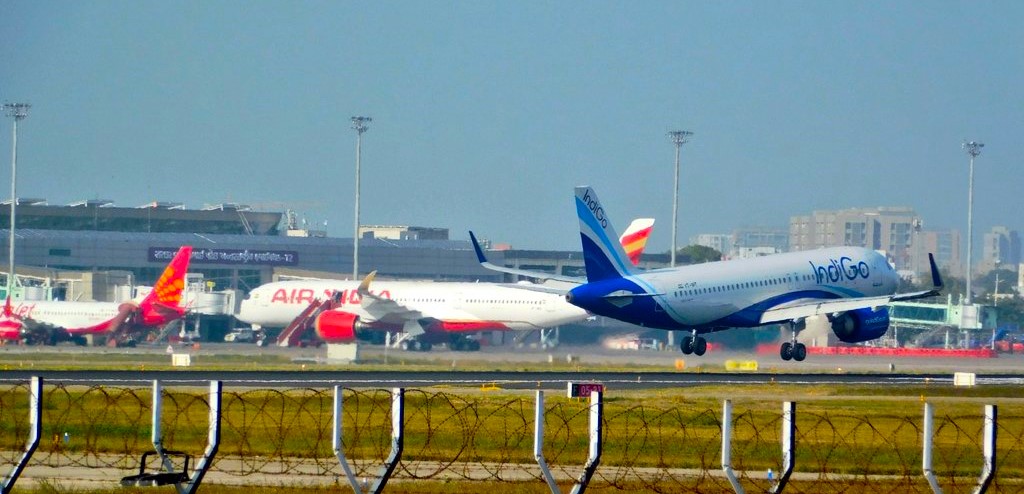


Indian Directorate General of Civil Aviation (DGCA) has made significant changes in the regulations pertaining to Flight Duty Time Limitations (FDTL) for flight crew, in line with the international best practices. These regulations have been instrumental in managing fatigue related aviation safety risks for more than a decade now.
In the month of November 2023 , the Directorate General of Civil Aviation had released a draft on new flight duty time limitation (FDTL) rules for pilots , which was proposed at a time when two young Indian pilots had died of cardiac arrest.
On Monday, 08 January 2024 , the Indian civil Aviation Regulator DGCA New Delhi, Aviation safety regulator DGCA released the revised Flight Duty Time Limitations (FDTL) norms for flight crew, entailing increased weekly rest periods to 48 hours, extension of night hours, and limiting the number of night landings to only two as against six earlier.
These regulations have been instrumental in managing fatigue-related aviation safety risks for more than a decade now, an official statement said.
The introduction of these reforms in the civil aviation sector would be a substantial step forward in addressing pilot fatigue, enhancing overall flight safety and balancing it with the projected growth of the aviation sector in India.
In April last year, the Indian Commercial Pilots’ Association (ICPA), a commercial pilots’ body, had written to Air India, demanding their grievances against the roster system be redressed. The ICPA had flagged how rosters were being amended with nil or short notice to the flight crew and ending up affecting their health.
With a view to address and mitigate concerns on pilot fatigue through a data driven approach, DGCA collected and analyzed extensive numbers of pilot rosters along with pilot fatigue reports submitted by airline operators.
Based on the study and analysis, some of the key areas inducing fatigue such as maximum Flight Duty Period, Night Duty, Weekly Rest Period, Flight Duty Period Extension etc. were identified.The revised FDTL regulations have been formulated after extensive data analysis and feedback from various stakeholders which includes airline operators, pilot associations and individuals.
The world-wide best practices (FAA – USA and EASA – EU) have also been taken into consideration in amending the regulations while keeping in mind the specific operating environment in India.
Additionally, the definition of night has been amended and it now covers the period of 0000-0600 hours in the revised regulations vis-a-vis the period of 0000-0500 hours under the previous regulations.
This change of an hour during the early morning will ensure adequate rest and also align the night duty period, which encompasses Window of Circadian Low (WOCL) from 0200-0600 hours, the time during which the circadian body clock cycle is at its lowest in terms of alertness, the statement said.
The revised regulations have taken into consideration different types of operations across time zones, the statement said, adding that the maximum flight time and maximum flight duty period for flight operations encroaching night have been restricted to eight hours' flight time and 10 hours flight duty period, respectively.
Indian Aviation Minister Jyotiraditya M. Scindia tweeted,
After in-depth analysis of pilot rosters, fatigue-related reports and direct feedback from pilots, we have introduced revised “FDTL Regulations” that include, increased rest periods, redefining night duty, and regular fatigue reports to be shared by airlines'
As per DGCA , they plan to adopt a new regime of fatigue management i.e. Fatigue Risk Management System (FRMS) going forward. The revised FDTL regulation is a stepping stone towards FRMS implementation in India. FRMS is a data-driven approach to enhance monitoring and reporting of flight crew fatigue.
DGCA seeks collaboration of various aviation stakeholders such as regulator, airline operators, flight crew etc. which will be required to implement stringent monitoring, record keeping and reporting to ensure adherence to a FRMS regime in future once the readiness to transition to the FRMS framework has been diligently demonstrated by all stakeholders.
The revised FDTL regulations are effective forthwith and the airline operators are required to comply with the revised regulations latest by 1st June, 2024. This will ensure sufficient time for the airline operators to adapt to the changes while taking into account the logistics, system changes and consequential arrangements arising out of the amendments in revised FDTL regulations. With the implementation of the revised FDTL regulations, the aviation sector aspires for safer skies.
The DGCA amendment of reducing the number of night flight duty hours, landings and also increasing weekly rest hours, will likely leave carriers short of cockpit crews and cabin crews. Ofcourse this would force the carrier to hire more, but how the airlines manage this with minimal impact on their economics will be worth following.
